Abstract The PRad-II and X17 experiments are scheduled to run in Jefferson Lab’s Hall B from November 2025 to July 2026. These experiments strive to give definite answers to long-standing questions in hadron physics. PRad-II is addressing the discrepancy in elastic electron-proton scattering at momentum transfers between 0.01 and 0.06 GeV2 that are seen between the world’s most complete data...
Belle and Belle II have collected world-leading data samples of tau decays. We will report on recent tests of lepton universality and searches for lepton-flavor violation in these decays. They allow us to probe the Standard Model with high precision. Belle II has an unique reach for a broad class of models that postulate the existence of dark matter particles with MeV--GeV masses. We will...
Water distribution systems can experience high levels of leakage, originating from different sources, such as deterioration due to aging of pipes and fittings, material defects, and corrosion. In addition to causing financial losses and supply problems, leakages in treated water distribution also represent a risk for public health. Despite several techniques for leak detection are already...
The $\Sigma$-nucleon strong interaction is an important ingredient to understand the composition of neutron stars and is also crucial for theoretical predictions on potential $\Sigma$-hypernuclei. Data on this interaction is scarce and purely based on scattering experiments. Since data points are only available at rather high relative momenta and their uncertainties are sizeable, theory...
Precise measurements of absolute nuclear charge radii are crucial ingredients for QED tests and are valuable benchmarks for modern nuclear structure theory [1]. Muonic atom spectroscopy is well known as an ideal method to accurately determine the root-mean-square (RMS) radii of the nuclear charge density distribution. By measurements of the 2p-1s and 2s-2p transitions of muonic atoms, this...
Monolithic Active Pixel Sensors (MAPS) are becoming increasingly important in future particle physics experiments due to their ease of integration, high spatial resolution, and low material budget. While MAPS have mostly been used for tracking where only binary hit information is stored, measuring signal amplitude could enable particle identification (PID) and enhance tracking capabilities. In...

